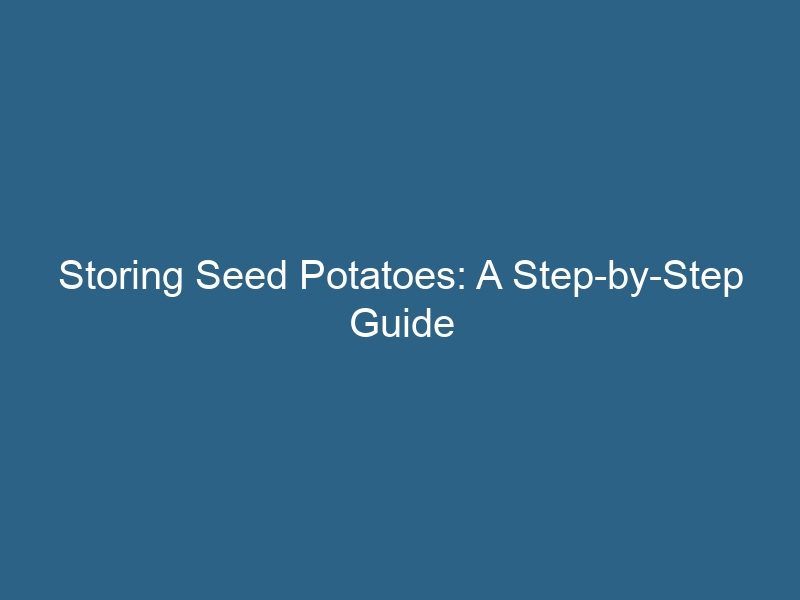Quck answer
Seed potatoes should be stored in a cool, dark, and well-ventilated place. The ideal temperature for storing seed potatoes is around 40°F (4°C). It is important to keep them away from direct sunlight and sources of heat, as this can cause sprouting or rotting. To prevent moisture buildup, store the seed potatoes in a breathable container, such as a mesh bag or a wooden crate. Regularly check the stored potatoes for any signs of rot or sprouting and remove any damaged ones to prevent the spread of disease. Following these storage guidelines will help maintain the quality of seed potatoes for future planting.
Potatoes, a popular ingredient in many dishes, can be easily grown at home. Learning how to store seed potatoes is important for a successful harvest. Seed potatoes are specifically grown for replanting and producing a potato crop. Unlike store-bought potatoes, seed potatoes are untreated and have a higher chance of sprouting and growing. In this guide, we will discuss the importance of seed potatoes, how to harvest them, and the proper storage techniques.
Understanding Seed Potatoes
Seed potatoes are not a different type of potato, but rather potatoes that are specifically grown for replanting. These potatoes have a different classification because of their purpose. Potatoes are tubers that store food for the plant. Sprouts grow from the “eyes” of the potato, which can then develop into new plants. Store-bought potatoes are often treated with chemicals to prevent sprouting, making them less effective as seed potatoes.
Harvesting Seed Potatoes
To harvest seed potatoes, carefully dig them up from the ground. Gently brush off any excess soil, but avoid washing them. Certified disease-free potatoes can also be purchased from garden supply stores. It is important to practice crop rotation when using homegrown seed potatoes to prevent disease. By planting in different areas each year, the risk of infection and damage to the crop is reduced. Harvesting a variety of potato types, including heirloom varieties, can also increase the yield and diversity of your crop.
Proper Storage Techniques
When storing seed potatoes, it is crucial to keep them in a cool and dry place, ideally around 50 degrees Fahrenheit. While some humidity is necessary, too much moisture can cause rotting. Avoid moving or exposing the potatoes to light or heat during the storage period, as they require time to rest. Suitable locations for storing seed potatoes include cool closets or cellars. If storing in a basement, ensure that the potatoes are protected from pests.
During the storage period, place the seed potatoes in a cardboard box or brown paper bag. This allows for proper ventilation, so avoid stacking them too high. Do not cover or close the container completely, as air circulation is essential. Following these storage guidelines will help ensure the quality and viability of your seed potatoes for the next planting season.
About three to four weeks before you plan to plant your crop, transfer your seed potatoes to a well-lit area with high humidity. A good option would be a sunny window or under a grow light. The goal of this step is to encourage the sprouting of the potatoes. You can also cover the seed potatoes with moist burlap bags to help with the sprouting process.
Steps for Planting Seed Potatoes
If your seed potatoes are small, there is no need to cut them. However, if you have larger potatoes in storage, you should cut them into pieces, making sure each piece has two to three “eyes”. Each piece should weigh around two ounces in order to maximize your crop yield. Allow the cut potato pieces to dry for several days before planting them.
Plant your seed potatoes in soil that is well-draining, rich, and fertilized. The depth should be around 6 inches. If you decide to hill your potatoes, mound the soil around them and add a layer of mulch on top. Keep the hills about 1 foot apart. Remember to water your seed potatoes regularly, giving each plant 2 inches of water per week.


